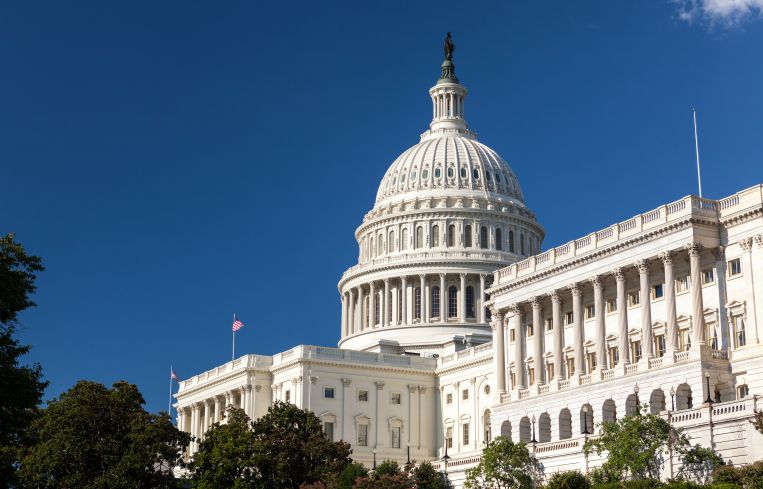How Washington Can Step Up on Affordable Housing
By Jolie Milstein October 26, 2023 10:58 am
reprints
The New Yorker cover from 1976, “View of the World from 9th Avenue,” famously devotes less space to the 49 other states than to the two blocks between Ninth Avenue and the Hudson River.
However, it notably included Washington, D.C. The previous year, President Ford had signed a bill bailing out the city, so perhaps the cartoonist understood the importance of the federal government to everyday life in the Big Apple.
The New York State Association for Affordable Housing certainly has a very healthy appreciation for the importance of Washington, as federal programs and tax policy undergird every aspect of affordable housing development and operation. And, today, the federal government needs to step up on the affordable housing front.

Across the U.S., about half of all renter households are rent-burdened — meaning they spend more than 30 percent of their income on housing costs — and about 85 percent of all Americans say the availability of affordable housing in their community is an issue. An emergency of this scale requires a federal solution, and there are several good options on the table to ease affordability issues across the nation. If our leaders put the well-being of residents before politicking, they can enhance funding for critical affordable housing development and vastly expand the nation’s access to housing in their neighborhoods.
Most importantly, back in 2021, Congress took up the Affordable Housing Tax Credit Improvement Act. It’s a bill that was ultimately removed from the Build Back Better Act, but which could help to expand financing opportunities through private activity bonds (PABs) for affordable housing.
Right now, projects that use PABs automatically qualify for Low-Income Housing Tax Credit funding, a critical financing tool for affordable housing production. However, PABs can be used only for projects that use the bonds for at least half of the project — referred to as “the 50 percent test.” This arbitrary percentage limits the number of projects that can be covered and constructed across the country as Congress has placed statutory limits on the number of PABs each state can issue.
By lowering the test from 50 percent to 25 percent, Congress would massively expand the affordable housing industry’s ability to produce new units nationwide. According to a Novogradic analysis in 2021, it would provide an additional $93.2 billion in new resources in just a decade, producing an additional 1.5 million affordable homes across the nation. It will particularly help New York state, which spends all its PABs every year and chips in capital from the city and state to fill gaps in projects.
Another priority should be enhancing the Section 8 program, which can bring direct relief to households by allowing eligible renters to pay 30 percent of their income on rent and utilities, while the federal government covers the rest. However, disinvestment in the program prevents 75 percent of eligible renters from receiving federal rental assistance benefits — leaving people vulnerable to housing instability, overcrowding and homelessness.
During his 2020 presidential campaign, Joe Biden proposed expanding funds so all who are eligible for a housing voucher could receive one — a plan that could profoundly impact economic stability throughout the country. In fact, Columbia’s Center on Poverty and Social Policy finds a universal Section 8 voucher program could potentially reduce the number of people living in poverty by about 18 percent nationally.
Finally, Congress must ensure that building owners who provide affordable housing or accept Section 8 vouchers are not financially penalized by insurance costs. The insurance market across the U.S. is in turmoil due to the effects of climate change and resulting severe weather events. This is exacerbated in New York by the antiquated Scaffold Law and the aggressive jury awards in parts of New York City that led to the coining of the term “Bronx jury.”
But skyrocketing insurance rates for affordable housing are a nationwide issue, and Congress needs to enact federal solutions. Flood insurance is a major precedent for heavy federal involvement in insurance. Similarly, the Community Reinvestment Act heavily regulates the banking sector, but not the insurance sector, even though insurance is a development prerequisite. And there is no federal law prohibiting discrimination against affordable housing by insurance carriers — insurers often consider these buildings as “high risk” regardless of actual loss rates — and increase premiums accordingly.
From direct financial investment in new development to bolstering our rental assistance programs to removing roadblocks within our housing development and financing system, 2024 can be the year that Washington takes real action on housing. We urge Congress to get behind commonsense solutions – for the well-being of Americans across the country dealing with the nationwide housing crisis.
Jolie Milstein is president and CEO of the New York State Association for Affordable Housing.


